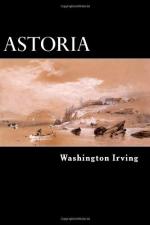The favorite ornaments of the men were collars of bears’ claws, the proud trophies of hunting exploits; while the women and children wore similar decorations of elks’ tusks. An intercourse with the white traders, however, soon effected a change in the toilets of both sexes. They became fond of arraying themselves in any article of civilized dress which they could procure, and often made a most grotesque appearance. They adapted many articles of finery, also, to their own previous tastes. Both sexes were fond of adorning themselves with bracelets of iron, brass, or copper. They were delighted, also, with blue and white beads, particularly the former, and wore broad tight bands of them round the waist and ankles, large rolls of them round the neck, and pendants of them in the ears. The men, especially, who in savage life carry a passion for personal decoration further than the females, did not think their gala equipments complete unless they had a jewel of hiaqua, or wampum, dangling at the nose. Thus arrayed, their hair besmeared with fish oil, and their bodies bedaubed with red clay, they considered themselves irresistible.
When on warlike expeditions, they painted their faces and bodies in the most hideous and grotesque manner, according to the universal practice of American savages. Their arms were bows and arrows, spears, and war clubs. Some wore a corselet of pieces of hard wood laced together with bear grass, so as to form a light coat of mail, pliant to the body; and a kind of casque of cedar bark, leather, and bear grass, sufficient to protect the head from an arrow or war club. A more complete article of defensive armor was a buff jerkin or shirt of great thickness, made of doublings of elk skin, and reaching to the feet, holes being left for the head and arms. This was perfectly arrowproof; add to which, it was often endowed with charmed virtues, by the spells and mystic ceremonials of the medicine man, or conjurer.
Of the peculiar custom, prevalent among these people, of flattening the head, we have already spoken. It is one of those instances of human caprice, like the crippling of the feet of females in China, which are quite incomprehensible. This custom prevails principally among the tribes on the sea-coast, and about the lower parts of the rivers. How far it extends along the coast we are not able to ascertain. Some of the tribes, both north and south of the Columbia, practice it; but they all speak the Chinook language, and probably originated from the same stock. As far as we can learn, the remoter tribes, which speak an entirely different language, do not flatten the head. This absurd custom declines, also, in receding from the shores of the Pacific; few traces of it are to be found among the tribes of the Rocky Mountains, and after crossing the mountains it disappears altogether. Those Indians, therefore, about the head waters of the Columbia, and in the solitary mountain regions, who are often called Flatheads, must not be supposed to be characterized by this deformity. It is an appellation often given by the hunters east of the mountain chain, to all western Indians, excepting the Snakes.




